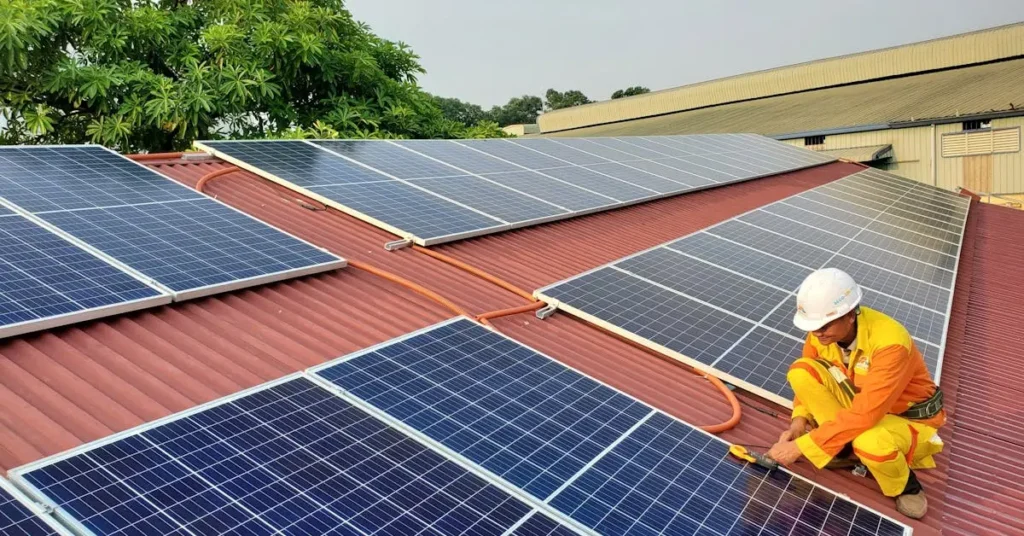Harnessing the sun’s energy through photovoltaic (PV) systems has surged in popularity as a renewable and sustainable energy source. Whether you’re a homeowner looking to install solar panels or a professional in the renewable energy sector, measuring solar energy is critical to system efficiency. Digital solar power meters are indispensable tools that can help measure the sun’s radiance and are vital in determining the power potential of solar installations. But with various types available, how do beginners in solar technology know which one to choose?
This comprehensive guide will walk you through selecting and using a digital solar power meter, ensuring you maximize your solar energy investments.
What is a Digital Solar Meter?
A digital solar power meter is an electronic device used to measure the intensity of sunlight, typically in units of watts per square meter (W/m²). It’s an essential tool for evaluating the potential of a site for solar energy generation and maintaining the performance of installed systems. These meters are also valuable in research, agriculture, and meteorological applications.
Digital solar meters offer the advantage of a quick and precise output, enabling users to adjust and optimize their solar energy systems with real-time data feedback. They are designed to capture solar radiance with high accuracy, which is critical in applications where system productivity and ROI are paramount.
Types of Digital Solar Power Meters
Incident Light Meters
Incident light meters are fundamental tools used to measure light exposure on a surface. These are the most basic types of digital solar power meters and are ideal for general light measurement and photography. Still, they may need to be more sensitive for advanced solar applications.
Pyranometers
Pyranometers are instruments specifically designed to measure the solar irradiance flux density. They measure the full spectrum of solar irradiance from the sun, typically expressed in watts per square meter (W/m²). This type of meter is more sensitive and accurate than incident light meters and is crucial for solar energy system design and performance evaluation.
Solar Irradiance Meters
Solar irradiance meters measure the solar power density at the surface, considering the direct and diffuse components. They can provide information about the available solar power for different types of solar panels, aiding in system performance testing and maintenance.
Each type of meter serves a specific purpose, so it’s essential to understand your measurement needs before purchasing.
Choosing the Right Meter
When selecting a solar power meter for your solar power system, consider the following factors:
Factors to Consider:
- Application: Determine whether you need a meter for residential, commercial, or scientific purposes.
- Measurement Range: Ensure that the meter’s measurement range covers your location’s expected solar irradiance levels.
- Accuracy: Choose a high-accuracy and reliability meter to ensure precise measurements.
- Integration: If you have an existing solar power monitoring system, ensure the meter is compatible with your monitoring platform.
- Budget: Consider your budget and choose a meter that offers the best value for your investment.
How to Use a Digital Solar Power Meter
Calibration
Calibrate your meter as per the manufacturer’s instructions to ensure accurate readings. This step is critical to maintain baseline accuracy, especially for periodic calibrations.
Placement
Proper placement of the solar power meter is vital. Ensure there are no shadows or obstructions between the meter and the sun, and it’s perpendicular to the sun’s rays.
Reading and Interpreting Data
Read the meter display and record the solar irradiance values. Over time, you’ll learn to interpret these values to understand seasonality, weather impact, and system efficiency changes.
Benefits of Using Digital Solar Power Meters
Improved System Performance
By understanding the daily and seasonal variations in solar energy, you can optimize the tilt and orientation of your panels for maximum energy capture.
Enhanced Energy Efficiency
Real-time monitoring allows for immediate adjustments to system components, improving energy conversion and reducing waste.
Maintenance Optimization
Regular monitoring with a digital solar power meter can detect system degradation early, allowing for proactive maintenance and maximizing system lifetime and performance.
Conclusion
In solar technology, informed decisions can make a tremendous difference. Selecting and using the proper digital solar power meter can help you measure and understand solar power and enhance your system’s output and longevity. Take your time to research and choose a meter that suits your needs, and become familiar with the process of solar energy measurement. With a well-chosen digital solar power meter, you’re one step closer to unlocking the full potential of solar power in your projects and applications.
If you want to read more, visit our blog. We’ve got more topics!



